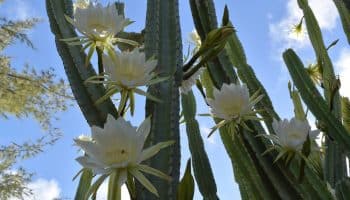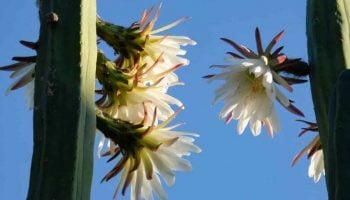Welcome to part two in a three-part series about Responsible Psychedelic Use.
You won’t be surprised to learn that, here at Third Wave, we are not the greatest fans of the “Just Say No” school of thought or the failed “War on Drugs”. But we are huge fans of the well-informed, guided use of psychedelic drugs and medicines. We reviewed potential hazards for the unwary in the first of this three-part series, Responsible Substance Use: There is No magic Bullet. In this second post, we focus on the six fundamentals of transformative, responsible psychedelic substance use.
1. CLARIFY YOUR WHY: WHY DO YOU WANT TO WORK WITH PSYCHEDELICS?
Psychedelics are not the answer to life, the universe, and everything—though there are times when it might seem that way. The classic psychedelics (including LSD, psilocybin, and DMT) exert their effects by locking on to serotonin 2A (5-HT2A) receptors, which are found in abundance in the cerebral cortex of the brain. This has the remarkable effect of making everyone and everything seem exquisitely meaningful.
Through the lens of ordinary consciousness, life reveals itself to be complex and nuanced. Despite the allure of simple solutions, psychedelics and hallucinogenic compounds are not a panacea for mental health issues, let alone life’s many other imperfections.
So it is important to ask yourself whether these medicines are appropriate to your situation and mental wellbeing. Are they a band-aid to avoid confronting a painful problem? Are your expectations realistic?
You might also consider whether there is a long-term purpose to your ingesting moderate or major doses of hallucinogens, or whether you are simply chasing “special experiences” for the fun of it. In other words, are transformation and transcendence your objectives, or are you more interested in recreational use?
The former appear to be crucial for healing through these psychoactive substances. Research by Roland Griffiths at Johns Hopkins University and other psychedelic researchers suggests that mystical experiences are often the key to breakthroughs for people with problems such as drug abuse and alcoholism.
And have you tried the many, perhaps gentler, ways to alter your everyday consciousness and achieve positive changes, such as holotropic breathwork, mindfulness, yoga, lucid dreaming, and microdosing? (To find out more about these options, read the final post in this series.)
2. KNOW THE SOURCE AND TEST YOUR PSYCHEDELIC SUBSTANCES
It goes almost without saying that you have a responsibility to discover exactly what psychoactive substances you are putting into your body and their likely effects. Education is the first step on the road to harm reduction. To learn more about all the major psychedelics, from lysergic acid diethylamide (LSD) and psilocybin to ketamine and kratom, your first port of call might be Third Wave’s ultimate guides.
To read experience reports from other psychonauts who have led the way, Erowid is another unparalleled resource.
Largely as a result of legal prohibition, the purity of psychedelic substances and psychoactive drugs can vary enormously because, unlike legal, licensed medicines, there is no regulatory procedure. According to the Aware Project, Southern California’s Psychedelic Society: “Nearly 100% of substances are cut with one or more adulterants, and it’s not just baking soda anymore.”
We have heard reports of ketamine and other substances being cut with fentanyl, a potent opioid that has caused an epidemic of overdoses. The purity of ketamine—which is a rapid-acting antidepressant—as provided by health care professionals in clinics is not at issue. However, illicit sources of the drug should be treated with skepticism. The good news is that fentanyl testing strips are inexpensive and widely available. In addition to these, Bunk Police and DanceSafe sell test kits for MDMA, LSD, DMT, mescaline, and ketamine.
In addition to testing, to the extent that this is possible, you should ensure that your source is credible and reliable.
And finally, as we noted in the first article, psychedelic drug use is a bad idea for anyone with schizophrenia, bipolar disorder, or any other mental health condition that makes them prone to psychosis. It’s best to consult with someone trained in psychiatry and psychopharmacology before working with any psychedelic substances or plant medicines.

3. MAKE ETHICAL CHOICES WHEN WORKING WITH PSYCHEDELICS
While some substances are synthetic—such as LSD, and some are from fully cultivable, renewable sources—such as psilocybin mushrooms, other psychedelics come from potentially non-renewable, unethical sources.
Among those raising ethical and sustainability red flags are:
- Ayahuasca from the vine of Banisteriopsis caapi and the shrub Psychotria viridis;
- Mescaline, from the peyote cactus Lophophora williamsii;
- Ibogaine or iboga from the rainforest shrub Tabernanthe iboga;
- Kambo from the giant leaf or monkey frog Phyllomedusa bicolor;
- 5-MeO-DMT from the Sonoran Desert toad Incilius alvarius.
Like locusts, we humans have an innate tendency to swarm, consuming everything in our path. The boom in ayahuasca tourism is a case in point, because while the ayahuasca vine is not strictly endangered, harvesting it from the wild is severely depleting the species close to tourism hotspots.
One solution favored by responsible retreat centers is sustainable cultivation—ideally permaculture, which attempts to integrate cultivated species into the wider ecosystem. The Temple of the Way of Light has been lighting the way in this regard.
Where sustainable use has become impossible, alternative sources of the same medicine are often available. To preserve the peyote cactus, for example, ethical consumers can source their mescaline from the plentiful, fast-growing San Pedro (Huachuma) cactus. The more patient among us can even grow it from seed.
It is also worth remembering that synthetic mescaline, which fueled the wondrous journey that Aldous Huxley describes in The Doors of Perception, has been available for decades.
Similarly, 5-MeO-DMT, which is traditionally harvested from the venom glands of the Sonoran Desert toad, can be readily synthesized in a chemistry lab.
4. START SLOW AND KNOW YOUR OPTIMUM DOSE
If Albert Hofmann, the creator of LSD, were still around to offer advice, he would surely counsel anyone embarking on their first psychedelic journey to start low and go slow when dosing. As a chemist and pharmacologist, he knew the value of careful, measured experimentation to determine the strength of a substance and its optimal dose for a particular individual.
He also knew all too well that, once swallowed, you can’t take back a “heroic dose”. Even he was caught unawares by the potency of his creation: 250 micrograms (millionths of a gram) of LSD turned out to be too much LSDA high-dose or even a single dose, if not measured properly, can increase the likelihood that you will have a “bad trip”. They also increase the chances of ego dissolution, which might help you achieve your goal of transcendence but can nonetheless be frightening.
As Tim Ferriss writes on his blog: “Start small. Take much less than you think you can handle. You can always take more, but you can’t un-hit the golf ball once you smash it.”
Crucially in this regard, the effects of some psychedelics, such as DMT, come on very quickly whereas others, such as psilocybin, take their time. So, before anything else, be sure to do your research and be patient before taking that second dose.
Both the dose and mode of administration are important to consider. For magic mushrooms, for example, they could be ingested fresh, dried, or infused in a tea, with doses ranging from microdose to megadose. There are also many ways to microdose cannabis, and this is becoming a popular option because with legalization and changes to drug policy, law enforcement is less of a worry.
But all your research, all your care and patience, will be for nothing if you don’t keep a record of what you take when, the dose, and its effects for future reference.
Keeping a psychedelic diary will also allow you to pace yourself and ensure that you allocate enough time in between doses to fully integrate the lessons into everyday life. As the Aware Project blog puts it: “Rushing from one experience on to the next will not only shortchange the benefits, but can create internal imbalances that place unnecessary stress on the body and overwhelm the nervous system.”
A diary or calendar will also help you keep sight of your intentions and goals, rather than slipping into habitual use, which can lead to psychological and even chemical dependence, with no actual benefit for your spiritual or mental wellbeing.
You might consider scheduling daily, weekly, monthly, and annual practices, according to the planning required for each and the time needed to fully integrate the experience. You might plan a psychedelic retreat as an annual practice, for example, whereas your daily practice might be yoga or meditation.
Finally, it is well worth scheduling a complete break and then noting—objectively, as Hofmann might have done—what happens next. Are you unknowingly becoming dependent on a particular chemical? What might the negative consequences of that be?

5. PSYCHEDELIC SUPPORT: FINDING THE RIGHT GUIDES
Psychonauts are no longer the lonely pioneers they once were. Advice, support, guides, coaches, and therapists are just a few clicks away.
There are also a large number of psychedelic societies that have sprung up around the world to provide spaces for discussion, education about responsible use, and the sharing of experiences. You can find most of them listed in this directory which includes their contact emails, websites, and social media pages.
Another directory, Psychedelic Experience, lists retreat centers (with reviews from past guests) in addition to details of psychedelic societies, support groups, and research organizations.
TripSafe.org provides a wealth of free educational resources for responsible use of ‘shrooms (psilocybin mushrooms) and acid (LSD), including advice for guides. Meanwhile, the heroes at TripSit provide 24/7 live support with a focus on talking people through their more challenging experiences, or just providing a quiet space for a calming chat.
On the theme of mutual support, Third Wave has put together a resource for anyone seeking to access or build their own local psychedelic community, including advice for guides or those who support psychedelic experiences.
6. FULLY INTEGRATE YOUR PSYCHEDELIC EXPERIENCE
Without integrating what you have learned into everyday life, your psychedelic experiences will be just that—fascinating but transient experiences. Indeed, the temptation may be to keep coming back for more experiences without putting in the hard work necessary for spiritual and psychological growth.
One of the most enlightened developments of the past few years has been the emergence of one-to-one psychedelic coaching. To learn more about the different types of coaches (including microdosing, integration, and business / organizational training), and how to evaluate a coach before enlisting their services, we recommend you read Third Wave’s guide to psychedelic coaching.
For those seeking healing from anxiety, trauma, addiction, or depression, our guide to psychedelic therapists is a good starting point. Again, with psychedelic psychotherapy, great emphasis is placed on fostering healthy cognitive and behavioral habits. Substances such as LSD and psilocybin have an extraordinary capacity to restore openness and flexibility (as demonstrated in research by Robin Carhart-Harris and his fellow scientists at Imperial College London), but these traits must be nurtured. Otherwise the natural tendency is to return to our former, ossified ways of thinking and doing, mediated by the brain’s default mode network.
This is true of everyone. In the final article in this series, we consider complementary practices for altering consciousness, from mindfulness and meditation, to lucid dreaming, holotropic breathwork, and microdosing. These practices not only help us pace ourselves and integrate what we are learning from psychedelics, but they also keep open that window of cognitive flexibility that allows us all to progress and flourish as human beings.
Used wisely, psychedelics can be a great tool for healing. If you’re interested in microdosing and want to do it responsibly, our Microdosing Course can teach you how. We’ll guide you through the basics—then dive much deeper, helping you tailor your routine to meet your personal goals.
Disclosure: This article contains offers and affiliate links. Third Wave receives a small percentage of the product price if you purchase through affiliate links. For more details, click here for our ethics and affiliates policy.







